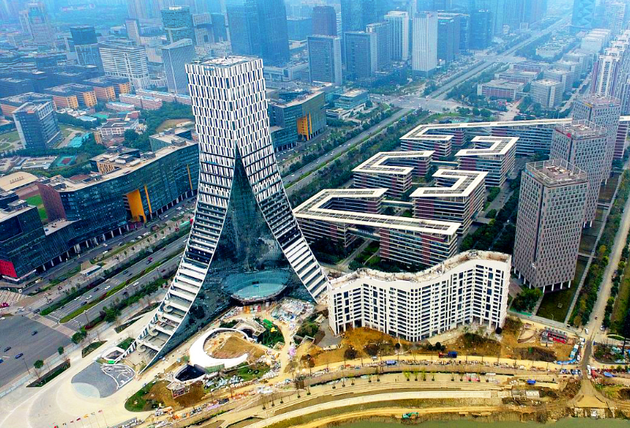Dec. 12 (NBD) -- Urban Master Planning of Chengdu (2016-2035) (draft for deliberation) was passed at the 2nd Plenary Session of 13th CPC Chengdu Municipal Committee that convened from Dec. 9 to 11.
It has been the fifth revision of the long-term planning document since 1949, which outlined the city's future development.
Chengdu, a city with a time-honored history
Chengdu's history can trace back to Baodun history site (4500 years ago), based on which the agriculture civilization of ancient Shu came into being.
In the early Han Dynasty, Chengdu became the most populous city (500 thousand people) in western China, only second to Chang'an, and was also the second largest city worldwide.
In 311 BC, King Huiwen of Qin Dynasty ordered to build Chengdu city following the example of Xianyang,the capital at the time. Till then, the city began to have clear boundaries, with the circumference of the city wall being 12 li (6000 thousand meters) and the height 7 zhang (23.3 meters).
It is neither a regular circle, nor a regular square. That's why earliest record of Chengdu called it a "tortoise city".
The city at the time was divided into two parts. The eastern part was dwelled by officers, while the western part was the commercial area. Thought small cities of different functions emerged afterwards, the pattern of the city proper remained.
Chengdu became more commercialized during the Tang and Song Dynasty. The saying that "Yangzhou is the largest city, while Chengdu the Second" showcases Chengdu's prosperity at that time. Accordingly, city boundaries of Chengdu were expanded further.
Gao Pian, governor of Chengdu at the time, expanded the city evenly in all directions in the shape of concentric sprawl, increasing the city proper by 5 times. The circumference of the city wall became 25 li (12,500 meters) and the height 2 zhang and 6 chi (8.66 meters).
Historical research shows that the expansion has laid a foundation for modern Chengdu. Since then, the city remains a political, economical, cultural and military center in western China.

Photo/VCG
Urban function upgrading of Chengdu
Starting from 1949, Chengdu saw a series of changes in landscape development.
After being adjusted for many times, areas under the jurisdiction of Chengdu expanded from 29.9 square kilometers to 12,100 square kilometers in 2014, approximately 400 times larger.
By the end of 2015, the pupation of Chengdu totaled 1, 228, 0500, ranking 4th among the population of mega cities in China.
In 1953, Chengdu was made one of the 8 priority cities to develop, which was high on the agenda of the first five-year plan. The 1954-version of the urban plan identified the city as a provicial capital that centers on precision instruments, machinery manufacturing and light industry.
In 1989, Chengdu was one the 14 cities that were granted economic administration authority at the provincial level by the central government.
In 1999, the State Council identified Chengdu as a vital central city in Western China.
In 2011-version Chengdu's urban plan maintained its identities as a provincial capital, a cultural city, a nation-level technology base, a commercial center and a transportation hub. In addition, the plan reiterated the balanced development of urban and rural areas of Chengdu.
However, with the constant changes in populations and landscape, the urban plan needs to adapt.
Liu Jihua, a researcher from China Academy of Urban Planning and Design, said that to expand the city proper, in fact, is to extend its services to a wider area, which will empower Chengdu to transform from a regional center to a national-level city.
Future growth of Chengdu
At present, Chengdu has a population of over 20 million, migrant and permanent, with its economic aggregate exceeding a trillion yuan.
Last year, the development plan of buiding Chengdu-Chongqing city cluster was approved, which entrusted Chengdu with greater expectations and responsibilities.
Chengdu needs to balance the development between the central area and the outskirts, among different regions and fill the gap between the insufficient development and people's demands of good life.
Urban Master Planning of Chengdu (2016-2035) (draft for deliberation) specified new strategic positions for the city, offering a way to solve unbalanced development.
Guided by the plan, Chengdu will reshape its city structure and industry mix. The strategy of "to expand eastwards, to push southwards, to control the West, to transform the North and to optimize the Central area" is to be fully carried out.
Tan Shaohua, professor of Faculty of Architecture and Urban Planning of Chongqing University, told NBD that Chengdu has entered a new development phase. To expand eastwards is essential for the city to gain more strategic space.
Chengdu aims to be a word-class city through a three-step approach.
Under the scheme, the capital city will endeavor to achieve the goal of moderate prosperity and turn itself into a national central city embodying new development concepts by 2020, then grow into an international hub city that has a high level of livability and significant influence in pan-European and pan-Asian regions by 2035, and finally evolve into a modern, sustainable global city by the middle of this century.
Email: tanyuhan@nbd.com.cn


 川公网安备 51019002001991号
川公网安备 51019002001991号





